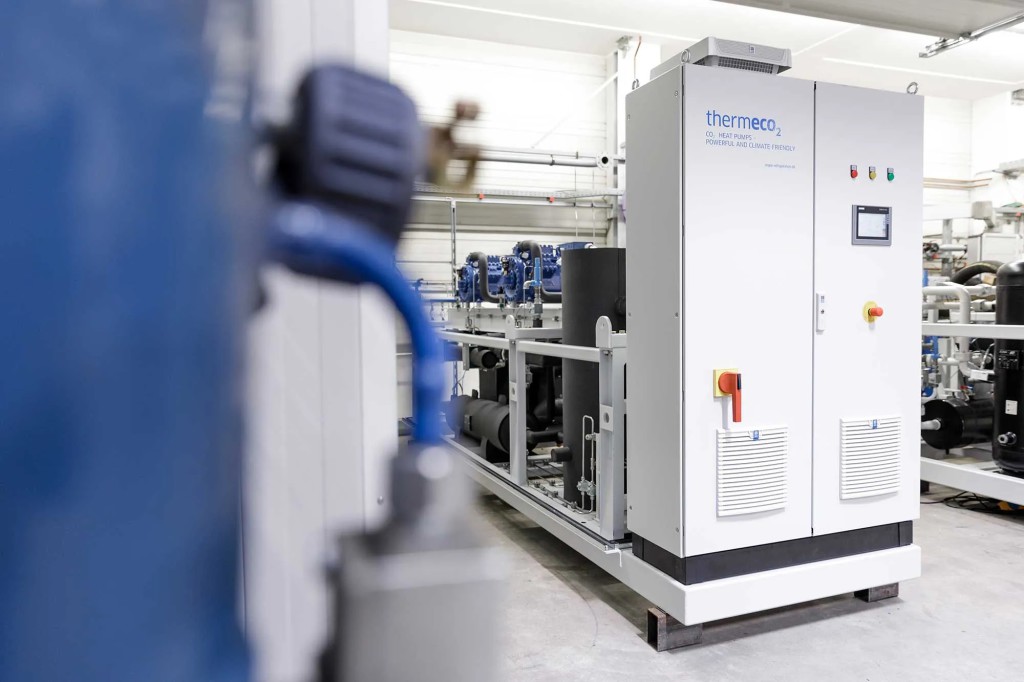Out with the new…and in with the old

After a long period out of favour, natural refrigerants are staging something of a revival. Tim Mitchell, Sales Director at Klima-Therm, explains why.
It is a widely accepted principle that natural products are seen as more wholesome, healthy, effective, comfortable, and/or sustainable than synthetic ones.
In short, natural is perceived to be better than man-made, whether we are talking about food, drugs, clothes, buildings, or anything else.
That is probably why natural refrigerants – those existing in, or derived from, nature rather than made by people – are making a comeback. Indeed, it’s fair to say that they are starting to outperform synthetic coolants after many years in the sub-zero wilderness.
We will delve into the reasons why a little later, but first, a modest history lesson:
Natural refrigerants started with water in prehistoric times and then water containing salt (brine). However, the most common modern natural coolants are:
Ammonia – Tends to be found in large scale refrigeration applications such as ice rink
cooling as well as district cooling systems, supermarkets, and convenience stores.
Hydrocarbons – Typically used in low-to-medium temperature refrigeration applications such as freezers and refrigerated display cases.
Carbon dioxide (CO2) – Commonly employed as a coolant in industrial refrigeration and can be used in combination with ammonia, either in cascade systems or as a volatile brine. It is also often found in food/ retail cooling, heat pumps and transport refrigeration.
The refrigerant used in the first steam compression refrigeration devices built in 1834 was the volatile organic compound diethyl ether (because it has a low boiling point and evaporates quickly, which allows it to absorb a significant amount of heat from its surroundings).
Despite its many attributes as a coolant, however, diethyl ether is also highly flammable, explosive, harmful to the skin and toxic in high concentrations.
Natural born chillers

Chloromethane and sulphur dioxide were also popular as coolants in early mechanical cooling systems. Then, in 1858, French engineer Ferdinand Carré developed a refrigeration machine that used water as the absorbent and ammonia as the refrigerant. A few years later, in 1867, Thaddeus Lowe patented the first CO2 refrigeration system. The dawn of the natural born chillers was here, but it didn’t last long.
Arguably, the age of synthetic refrigerants started in the 1890s when Belgian scientist Frédéric Swarts synthesised the first chlorofluorocarbons (CFCs), but it was not until the late 1920s that a research team formed by US car maker General Motors found a true replacement for the natural refrigerants then in use.
The team – headed by mechanical and chemical engineer Thomas Midgley, Jr. – improved the synthesis of CFCs and developed the first synthetic refrigerant (known as R12, or ‘Freon’) in 1928.
However, CFCs and, to a lesser extent, their successors, hydrochlorofluorocarbons (HFCFCs), are responsible for destroying the ozone layer so alternatives were sought and found in hydrofluorocarbons (HFCs) and hydrofluoro-olefins (HFOs), which contain no chlorine and therefore have zero ozone depletion potential (ODP).
Out of favour
HFC and HFO synthetic refrigerants have been widely used, particularly because of their non-flammable and non-toxic properties. This led inexorably to natural refrigerants falling out of favour.
Nonetheless, HFCs are greenhouse gases with a high global warming potential (GWP) which contributes to global warming. HFOs, too, have a negative side. While less harmful to the climate as a whole, they are prone to dissipating in the atmosphere to create high levels of trifluoroacetic acid, a corrosive toxin that can harm both people and the environment.
Which brings us back to where we started – with the revival of natural refrigerants, now seen as the cost effective, climate neutral alternative to man-made gases.
Product performance certification body Eurovent Certification puts it like this: “The obstacles that may have made their use prohibitive in the past (flammability, toxicity, or corrosion) are rapidly being overcome by modern technology, materials and health and safety practices.
“This means that natural refrigerants such as carbon dioxide, propane, ammonia and brine are suitable for use in a growing range of applications and are increasing in popularity.”
It concludes: “While natural refrigerants… may not be the answer for every HVAC or refrigeration application, it is evident they will dominate the market going forward







